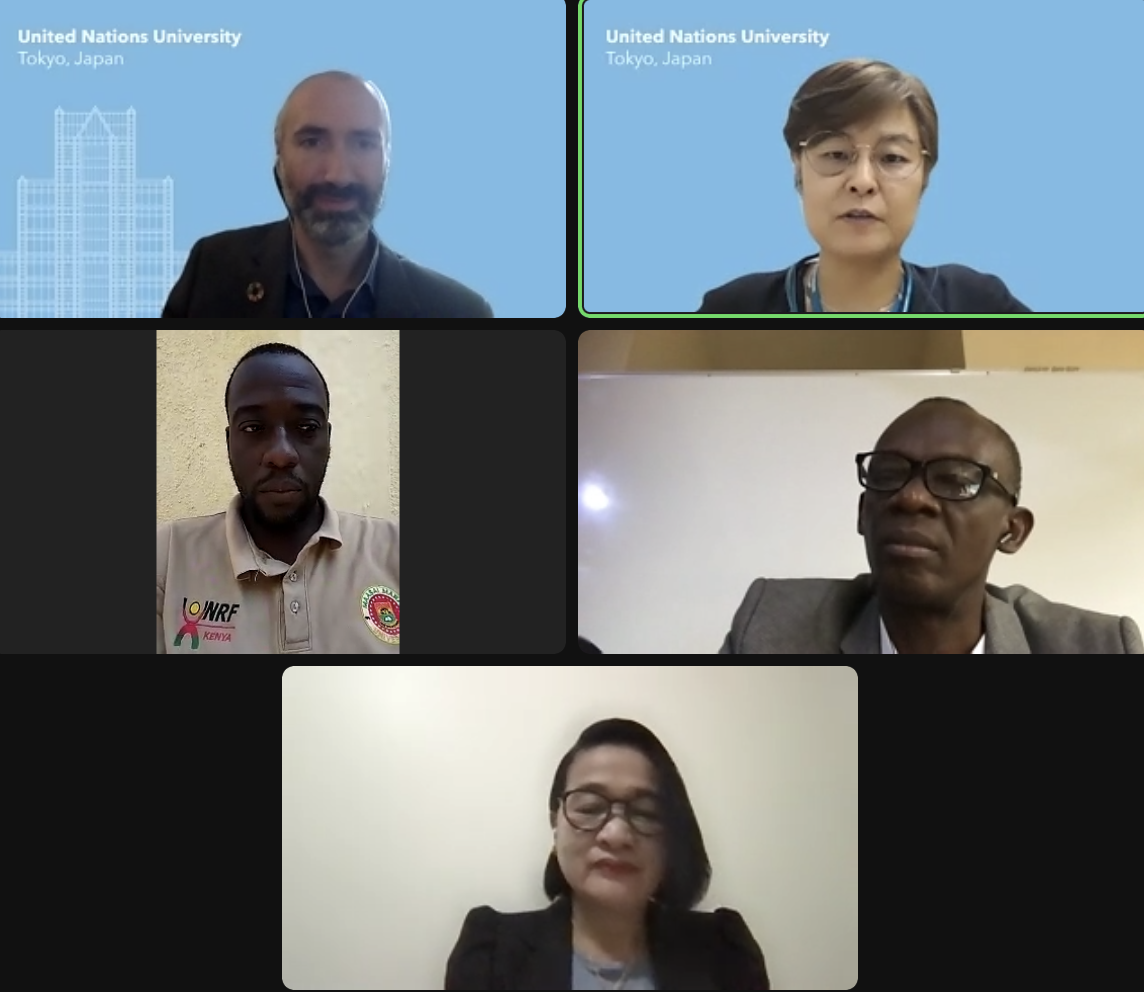RCEs Discuss Innovative Solutions Towards Enacting Biodiversity Education within Communities
 Key Highlights
Key Highlights
- UNU-IAS held an online session at the Sustainability Research & Innovation Congress 2022, focusing on innovative RCE Biodiversity projects.
- RCEs from Cebu, Zaria, and South Rift presented their biodiversity conservation projects, reflections from the field, and lessons they learned.
- Discussion focused on the ongoing impact of these projects and areas to consider to implement similar initiatives.
On 21 June, 2022, UNU-IAS held an online session at the Sustainability Research & Innovation Congress 2022, titled ‘Enacting Biodiversity Education and Transformative Learning within Communities: Lessons and Actions from the Global RCE Network’. The session delved into innovative solutions developed by RCEs, with a focus on biodiversity education conservation projects.
In opening remarks, Nancy Pham (UNU-IAS) explained how the RCE model - encompassing multi-stakeholder networks - can provide a more coordinated and effective approach to working with communities on biodiversity education and conservation initiatives.
Philip Vaughter (UNU-IAS) presented an overview of the ESD for 2030 framework from UNESCO and the Global RCE Network. This was followed by an analysis of the trends seen from biodiversity education projects conducted by the network during the Global Action Programme on ESD between 2015-2019 (also highlighted in the recent RCE Biodiversity video). Of the 135 RCE Biodiversity projects completed across 30 countries (focused on either SDG 14: Life Below Water or SDG 15: Life on Land), the majority used a species-centered approach as an entry point for biodiversity conservation education, followed by other themes including forests and trees, traditional knowledge, and agriculture. Nearly three quarters (74%) of projects took a community approach, implementing messaging that was accessible by, and involved the whole community.
RCEs then presented insights on their biodiversity conservation projects and reflections from the field, the challenges they faced, how they kept stakeholders engaged, as well as ways their projects could be modified or improved upon.
A project presented by Anna Liza Santillana (RCE Cebu) focused on community-based mangrove rehabilitation along the coastal area of Cadiz City, the Philippines, following the devastation that Typhoon Yolanda caused in 2013. Led by PNU Visayas, it served to build awareness of mangrove conservation among students, fisherfolks, and households, with activities including mangrove planting, survival rates assessments, and biodiversity mapping undertaken by the students. Through this project, fisherfolk were able to share Indigenous knowledge on mangrove resources conservation, whilst elementary teachers were upskilled on how to utilise instructional materials for a reading enhancement and conservation program.
Adamu Ahmed (RCE Zaria) presented a project which aimed to reverse, restore, and protect species considered endangered in the Zaria region due to vegetation cover change. The project conducted a spatio-temporal analysis of land cover change in the city region over five years, created a database of geo-tagged locations and attributes of endangered species, and developed a policy framework and strategy to protect endangered species, along with a stakeholder network. The project found that when the community understood the cultural, social, and historical values of endangered species, they were more receptive to the conservation of natural resources.
The final project from Brian Waswala (RCE South Rift) focused on addressing a number of challenges within the rift valley in Kenya, including competing alternative land uses, poor waste management, and conflicts related to climate change and natural resource use. The project embarked on active research and training on conservation and management practices, educating community members on areas such as the restoration of degraded grasslands and sustainable agriculture. Experiential learning to incorporate practical elements was a key focus, with youth undertaking citizen science, using apps for biodiversity monitoring and reporting.
A discussion led by Jonghwi Park (UNU-IAS) highlighted the ongoing impact of these projects. RCE Zaria’s project has expanded to bring in more stakeholders, including primary and secondary schools as well as NGOs, whilst there are opportunities to upscale the project across the entire state comprising 23 local governments, as well as throughout Nigeria, with other RCEs in the country expressing interest. RCE South Rift has developed a proposal to establish seedlings in different schools so that youth can be actively engaged in tree planting, in addition to working on policy design and the incorporation of agriculture, wildlife conservation, sustainable tourism and ecosystem management into ESD curricula. For communities wanting to replicate the projects discussed in their regions, Anna Liza Santillana stressed the importance of understanding the cultural background and needs of the community, ensuring there is a sense of ownership, and that any actions taken can meet their needs, provide a sustained source of livelihood, and contribute to a habitable environment.
In closing, Philip Vaughter noted the projects demonstrated examples in ecosystems not generally covered in formal curriculum, including coastal, drylands and grasslands, reiterating the diverse range of ESD projects RCEs are working on in their communities to protect and restore ecosystems, habitats, and species.
For further information on these projects, see the latest RCE Biodiversity publication here. A video featuring these projects can also be viewed here.


